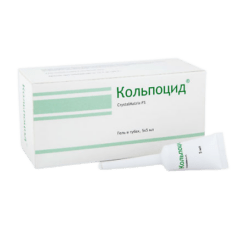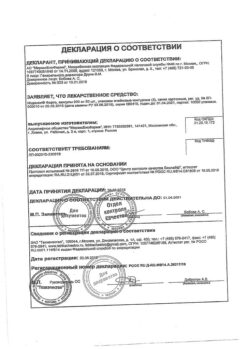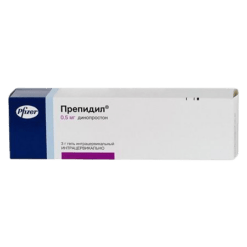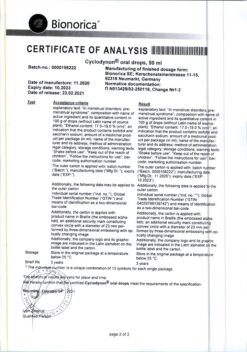No products in the cart.
Microgynon 150 mcg+30 mcg 21 pcs 21 pcs, 150 mcg+30 mcg 21 pcs
€20.17 €16.81
EAN: 5450557010208
SKU: 25349
Categories: Contraceptive, Gynecology and Obstetrics, Hormonal, Medicine
Description
Microgynon is a contraceptive, estrogen-gestagenic.
Pharmacokinetics
Levonorgestrel
Absorption
. After oral administration, levonorgestrel is rapidly and completely absorbed; its Cmax in serum, equal to 3-4 ng/mL, is reached after about 1 hour. The bioavailability of levonorgsstrel is almost complete with oral administration.
Distribution
Levonorgestrel is bound by serum albumin and sex hormone-binding globulin (hGBS). Only 1.3% of total serum concentrations are free; whereas 64% are specifically bound to HSPH and about 35% are not specifically bound to albumin. As a result of the induction of hGH synthesis by ethinylestradiol, the hGH-bound fraction increases while the albumin-bound fraction decreases. The apparent volume of distribution of levonorgestrel is approximately 184 L after a single dose.
Metabolism
Levonorgestrel is completely metabolized. The serum clearance rate is approximately 1.3-1.6 ml/min/kg.
Elevation
The serum levonorgestrel content decreases in two phases. T1/2 of the terminal phase is about 20-23 hours. Levonorgestrel is not excreted unchanged but only as metabolites (T1/2 – 24 h), which are excreted with urine and bile at a ratio of approximately 1:1
The equilibrium concentration. The pharmacokinetics of levonorgestrel are affected by serum hGH levels, which increase about 1.7-fold over a 21-day course of Microgynon. As a result of daily administration of the drug, serum levels of the substance increase by about 3-4 times, and the equilibrium concentration is reached in the second half of the cycle of administration. When the equilibrium concentration is reached, the clearance rate decreases accordingly to 0.7 ml/min/kg.
Ethinylestradiol
Absorption After oral administration, ethinylestradiol is absorbed rapidly and completely. Cmax in blood serum, equal to about 95 pg/ml, is reached in 1-2 hours. During absorption and the first passage through the liver, ethinylestradiol is metabolized, resulting in an average bioavailability of about 45% when taken orally, with significant individual differences ranging from 20-65%.
Distribution
Ethinylestradiol is almost completely (98%), although non-specific, bound by albumin. Ethinylestradiol induces the synthesis of HSPC. The apparent volume of distribution of ethinylestradiol is 2.8-8.6 L/kg.
Metabolism
Ethinylestradiol undergoes presystemic conjugation both in the small intestinal mucosa and in the liver. The main metabolic pathway is aromatic hydroxylation. The metabolic clearance rate from plasma is 2.3-7 ml/min/kg.
Elimination
The reduction of ethinylestradiol concentration in blood serum has a biphasic character; the first phase is characterized by T1/2 about 1 hour, the second – 10-20 hours. It is not excreted from the body unchanged. Metabolites of ethinylestradiol are excreted by the kidneys and liver in the ratio 4:6 with T1/2 about 24 hours.
The equilibrium concentration. Equilibrium concentration is reached after one week.
Indications
Indications
Contraception.
Pharmacological effect
Pharmacological effect
Microgynon is a contraceptive, estrogen-progestogen.
Pharmacokinetics
Levonorgestrel
Absorption
After oral administration, levonorgestrel is rapidly and completely absorbed, its Cmax in the blood serum of 3-4 ng/ml is achieved in approximately 1 hour. When taken orally, the bioavailability of levonorgstrel is almost complete.
Distribution
Levonorgestrel is bound by serum albumin and sex hormone binding globulin (SHBG). Only 1.3% of the total concentration in the blood serum is found in free form; whereas 64% are specifically associated with SHBG and about 35% are not specifically associated with albumin. As a result of the induction of SHBG synthesis by ethinyl estradiol, the fraction associated with SHBG increases, while the fraction associated with albumin decreases. The apparent volume of distribution of levonorgestrel is approximately 184 L after a single dose.
Metabolism
Levonorgestrel is completely metabolized. The clearance rate from serum is approximately 1.3-1.6 ml/min/kg.
Removal
The content of levonorgestrel in the blood serum decreases in two phases. T1/2 of the terminal phase is about 20-23 hours. Levonorgestrel is not excreted in unchanged form, but only in the form of metabolites (T1/2 – 24 hours), which are excreted in urine and bile in a ratio of approximately 1:1
Equilibrium concentration. The pharmacokinetics of levonorgestrel is affected by the level of SHBG in the blood serum, which increases approximately 1.7 times over a 21-day course of taking Microgynon. As a result of daily dosing of the drug, the level of the substance in the serum increases approximately 3-4 times, and the equilibrium concentration is achieved in the second half of the dosing cycle. When equilibrium concentration is reached, the clearance rate is reduced accordingly to 0.7 ml/min/kg.
Ethinyl estradiol
Absorption After oral administration, ethinyl estradiol is absorbed quickly and completely. Cmax in serum, equal to approximately 95 pg/ml, is achieved in 1-2 hours. During absorption and first passage through the liver, ethinyl estradiol is metabolized, resulting in its oral bioavailability averaging about 45%, with significant individual differences ranging from 20-65%.
Distribution
Ethinyl estradiol is almost completely (98%), although nonspecifically, bound by albumin. Ethinyl estradiol induces the synthesis of GSPC. The apparent volume of distribution of ethinyl estradiol is 2.8-8.6 l/kg.
Metabolism
Ethinyl estradiol undergoes presystemic conjugation, both in the mucosa of the small intestine and in the liver. The main route of metabolism is aromatic hydroxylation. The rate of metabolic clearance from blood plasma is 2.3-7 ml/min/kg.
Removal
The decrease in the concentration of ethinyl estradiol in the blood serum is biphasic; the first phase is characterized by T1/2 of about 1 hour, the second – 10-20 hours. It is not excreted from the body unchanged. Ethinyl estradiol metabolites are excreted by the kidneys and liver in a ratio of 4:6 with T1/2 in about 24 hours.
Equilibrium concentration. Equilibrium concentration is achieved after one week.
Special instructions
Special instructions
In case of planned surgery, it is recommended to stop taking the drug at least 4 weeks before the operation and not to resume taking it for 2 weeks after the end of immobilization.
While taking medications that affect microsomal enzymes, and for 28 days after their discontinuation, you should additionally use a barrier method of contraception.
While taking antibiotics (such as ampicillins and tetracyclines) and for 7 days after their discontinuation, you should additionally use a barrier method of contraception.
If the period of use of the barrier method of protection ends later than the tablet in the package, you need to move on to the next package of Microgynon without the usual break in taking the tablet.
If any of the conditions/risk factors listed below currently exist, the potential risks and expected benefits of Microgynon treatment should be carefully weighed in each individual case and discussed with the woman before she decides to start taking the drug. If any of these conditions or risk factors worsen, intensify, or appear for the first time, a woman should consult her doctor, who may decide whether to discontinue the drug.
Diseases of the cardiovascular system
There is evidence of an increased incidence of venous and arterial thrombosis and thromboembolism when taking combined oral contraceptives.
However, the incidence of venous thromboembolism (VTE) developing with combined oral contraceptives is less than the incidence associated with pregnancy (6 per 10,000 pregnant women per year).
In women taking combined oral contraceptives, extremely rare cases of thrombosis of other blood vessels, such as the hepatic, mesenteric, renal arteries and veins, the central retinal vein and its branches, have been described. The connection with the use of combined oral contraceptives has not been proven.
A woman should stop taking the drug and consult a doctor if symptoms of venous or arterial thrombosis or cerebrovascular disorders develop, which may include: unilateral leg pain and/or swelling; sudden severe chest pain, with or without radiation to the left arm; sudden shortness of breath; sudden attack of cough; any unusual, severe, prolonged headache; sudden partial or complete loss of vision; diplopia; slurred speech or aphasia; dizziness; loss of consciousness with/or without a seizure; weakness or very significant loss of sensation that suddenly appears on one side or in one part of the body; movement disorders; symptoms of “acute abdomen”. The risk of thrombosis (venous and/or arterial) and thromboembolism increases:
– with age
– in smokers (with an increase in the number of cigarettes or an increase in age, the risk further increases, especially in women over 35 years of age);
if available:
– family history (i.e. venous or arterial thromboembolism ever in close relatives or parents at a relatively young age); in case of hereditary predisposition, the woman should be examined by an appropriate specialist to decide on the possibility of taking COCs;
– obesity (body mass index more than 30 kg/m2);
– dislipoproteinemia;
– arterial hypertension;
– migraine;
– diseases of the heart valves;
– atrial fibrillation;
– prolonged immobilization, major surgery, any leg surgery or major trauma. In these situations, it is advisable to stop using combined oral contraceptives (in the case of planned surgery, at least four weeks before it) and not to resume use for two weeks after the end of immobilization.
The increased risk of thromboembolism in the postpartum period should be taken into account.
Circulatory abnormalities may also occur in diabetes mellitus, systemic lupus erythematosus, hemolytic uremic syndrome, chronic inflammatory bowel disease (Crohn’s disease or ulcerative colitis) and sickle cell anemia.
An increase in the frequency and severity of migraines during the use of combined oral contraceptives (which may precede cerebrovascular events) may be grounds for immediate discontinuation of these drugs.
Biochemical parameters that may be indicative of hereditary or acquired susceptibility to venous or arterial thrombosis include activated protein C resistance, hyperhomocysteinemia, antithrombin-II deficiency, protein C deficiency, protein S deficiency, antiphospholipid antibodies (anticardiolipin antibodies, lupus anticoagulant).
Tumors
There are reports of an increased risk of developing cervical cancer with long-term use of combined oral contraceptives. Its connection with the use of combined oral contraceptives has not been proven. Controversy remains regarding the extent to which these findings are attributable to sexual behavior and other factors such as human papillomavirus (HPV).
It was also found that there is a slightly increased relative risk of developing breast cancer diagnosed in women who used combined oral contraceptives. Its connection with the use of combined oral contraceptives has not been proven. The observed increased risk may be a consequence of earlier diagnosis of breast cancer in women using combined oral contraceptives.
In rare cases, the development of liver tumors has been observed during the use of combined oral contraceptives. If severe abdominal pain, liver enlargement, or signs of intra-abdominal bleeding occur, this should be taken into account when making a differential diagnosis.
Other states
Women with hypertriglyceridemia (or a family history of this condition) may have an increased risk of developing pancreatitis while taking combined oral contraceptives.
Although mild increases in blood pressure have been described in many women taking combined oral contraceptives, clinically significant increases have rarely been reported. However, if a persistent, clinically significant increase in blood pressure develops while taking combined oral contraceptives, these drugs should be discontinued and treatment of hypertension should be initiated. Taking combined oral contraceptives can be continued if normal blood pressure values are achieved with antihypertensive therapy.
The following conditions have been reported to develop or worsen both during pregnancy and while taking combined oral contraceptives, but their relationship with taking combined oral contraceptives has not been proven: jaundice and/or pruritus associated with cholestasis; formation of gallstones; porphyria; systemic lupus erythematosus; hemolytic uremic syndrome; chorea; herpes during pregnancy; hearing loss associated with otosclerosis. Cases of Crohn’s disease and ulcerative colitis have also been described during the use of combined oral contraceptives.
Acute or chronic liver dysfunction may require discontinuation of combined oral contraceptives until liver function tests return to normal. Recurrent cholestatic jaundice, which develops for the first time during pregnancy or previous use of sex hormones, requires discontinuation of combined oral contraceptives.
Although combined oral contraceptives may have an effect on insulin resistance and glucose tolerance, there is no need to change the therapeutic regimen in diabetic patients using low-dose combined oral contraceptives (less than 0.05 mg ethinyl estradiol). However, women with diabetes mellitus should be carefully monitored while taking combined oral contraceptives.
Women prone to chloasma should avoid prolonged exposure to the sun and ultraviolet radiation while taking combined oral contraceptives.
Laboratory tests
Taking combined oral contraceptives may affect the results of some laboratory tests, including liver, kidney, thyroid, adrenal function, plasma transport protein levels, carbohydrate metabolism, coagulation and fibrinolysis parameters. Changes usually do not go beyond normal values.
Effect on the menstrual cycle
While taking combined oral contraceptives, irregular bleeding (spotting or breakthrough bleeding) may occur, especially during the first months of use. Therefore, any irregular bleeding should be assessed only after an adaptation period of approximately three cycles.
If irregular bleeding recurs or develops after previous regular cycles, careful evaluation should be performed to rule out malignancy or pregnancy.
Some women may not develop withdrawal bleeding during a break from taking the tablets. If combined oral contraceptives are taken as directed, the woman is unlikely to be pregnant. However, if combined oral contraceptives have not been taken regularly before or if there are no consecutive withdrawal bleeds, pregnancy should be ruled out before continuing to take the drug.
Medical examinations
Before starting to use Microgynon, a woman is recommended to undergo a thorough general medical and gynecological examination (including examination of the mammary glands and cytological examination of cervical mucus) and exclude pregnancy. In addition, disorders of the blood coagulation system should be excluded.
In case of long-term use of the drug, it is necessary to conduct control examinations every 6 months.
A woman should be warned that drugs like Microgynon do not protect against HIV infection (AIDS) and other sexually transmitted diseases!
Impact on the ability to drive a car and equipment
Not identified.
Active ingredient
Active ingredient
Ethinyl estradiol, Levonorgestrel
Composition
Composition
1 tablet contains:
Active ingredient:
levonorgestrel micro 20 – 0.15 mg,
ethinylestradiol micro 20 – 0.03 mg,
Excipients:
lactose – 32.97 mg;
corn starch – 18 mg;
polyvidone 25000 – 2.1 mg;
talc – 1.65 mg;
magnesium stearate – 0.1 mg
Shell:
sucrose – 19.371 mg; polyvidone 700000 – 0.189 mg; polyethylene glycol 6000 – 2.148 mg; calcium carbonate – 8.606 mg; talc – 4.198 mg; titanium dioxide – 0.274 mg; glycerol 85% – 0.137 mg; mountain glycol wax – 0.05 mg; iron pigment oxide yellow – 0.027 mg
Contraindications
Contraindications
arterial hypertension (systemic blood pressure 160/100 or higher);
thrombophlebitis of any localization, thromboembolic pathologies (including cured ones);
severe cerebrovascular accidents, strokes; complicated heart defects;
high risk of cardiovascular damage (coronary heart disease, myocardial infarction);
surgical operations with prolonged immobilization (high probability of thromboembolic complications), hereditary thrombogenic diseases;
migraine with severe neurological symptoms;
severe acute and chronic liver diseases (acute hepatitis, liver cirrhosis in the stage of decompensation, oncological pathology);
diabetes mellitus lasting more than 20 years, or diabetes mellitus with severe vascular complications, regardless of the length of the disease;
breast cancer;
uterine bleeding of unknown etiology;
smoking at the age of 35 years and older;
hypersensitivity to the drug;
pregnancy.
Side Effects
Side Effects
Soreness and tension of the mammary glands, enlargement of the mammary glands, discharge from the mammary glands; spotting and breakthrough uterine bleeding; headache; migraine; change in libido; decreased/changes in mood; poor tolerance to contact lenses; visual impairment; nausea; vomit; stomach ache; changes in vaginal secretion; skin rash; erythema nodosum; erythema multiforme; generalized itching; cholestatic jaundice; fluid retention; change in body weight; allergic reactions. Rarely – increased fatigue, diarrhea.
Chloasma can sometimes develop, especially in women with a history of pregnancy chloasma.
As with other combined oral contraceptives, in rare cases the development of thrombosis and thromboembolism is possible.
Interaction
Interaction
Sulfonamides and pyrazolone derivatives can enhance the metabolism of the steroid hormones included in the drug.
Long-term treatment with drugs that induce liver enzymes, which increases the clearance of sex hormones, may lead to breakthrough bleeding and/or a decrease in the contraceptive effectiveness of Microgynon.
Such drugs include: phenytoin, barbiturates, primidone, carbamazepine and rifampicin; There are also suggestions for oxcarbazepine, topiramate, felbamate, ritonavir and griseofulvin and products containing St. John’s wort.
Contraceptive protection is reduced when taking antibiotics (such as ampicillins and tetracyclines), since, according to some data, some antibiotics may reduce the intrahepatic circulation of estrogens, thereby reducing the concentration of ethinyl estradiol.
Psoral combined contraceptives may affect the metabolism of other drugs (including cyclosporine), which leads to changes in their concentration in plasma and tissues.
When taking estrogen-progestin drugs, adjustment of the dosage regimen of hypoglycemic drugs and indirect anticoagulants may be required.
Overdose
Overdose
Symptoms that may occur in case of overdose: nausea, vomiting, spotting or metrorrhagia.
There is no specific antidote; symptomatic treatment should be carried out.
Storage conditions
Storage conditions
Store under normal conditions, out of the reach of children.
Shelf life
Shelf life
5 years.
Manufacturer
Manufacturer
Delpharm Lille S.a.S., France
Additional information
| Shelf life | 5 years. |
|---|---|
| Conditions of storage | Store in normal conditions, out of the reach of children. |
| Manufacturer | Delpharm Lille S.a.S., France |
| Medication form | pills |
| Brand | Delpharm Lille S.a.S. |
Related products
Gynecology and Obstetrics
Prepidil, intracervical gel 0.5 mg/3 g syringes with catheter
Buy Microgynon 150 mcg+30 mcg 21 pcs 21 pcs, 150 mcg+30 mcg 21 pcs with delivery to USA, UK, Europe and over 120 other countries.















